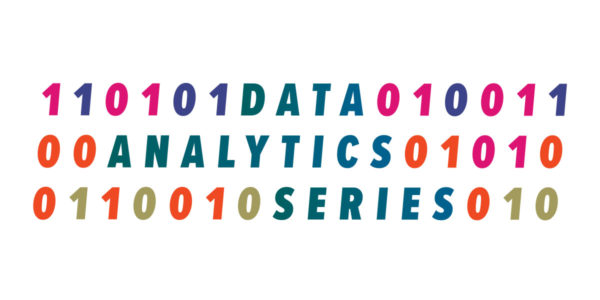
Higher education institutions are facing significant challenges to improving student access and outcomes at a time when they are also dealing with multiple and complex financial pressures. Growing demands from students and their families for an affordable, high-quality postsecondary education coupled with concerns about institutional financial sustainability are contributing to an unworkable equation.
As institutions face these pressures, many are turning to data to help them thread the needle of student success and financial sustainability, says Jonathan S. Gagliardi, assistant vice president for strategy, policy, and analytics, Lehman College, Bronx, N.Y. As part of this revolutionary moment for data analytics in higher education, colleges and universities are starting to consider ways to embrace data as a means of supporting their missions and impacting institutional performance.
“Data analytics requires leadership,” says Gagliardi, author of the book The Analytics Revolution in Higher Education (Stylus Publishing, 2018). “Leadership is something that is not just top down, although presidential and senior-level leadership is critical. But everybody on campus can be a leader, and data are the tool to help empower them in their leadership roles [to bring about the required change].”
In an interview with Business Officer magazine, Gagliardi discusses the unfolding analytics revolution and how campus staff and leaders, including business officers, can use data analytics to improve student outcomes and ensure a vibrant future for institutions of higher education.
You are the lead author and editor of the book The Analytics Revolution in Higher Education. Can you explain how the changes that campuses are experiencing today may be different from other periods of innovation? How are data revolutionizing areas such as student success, for example?
There’s a long history of innovative approaches to American higher education that have played out at different times—in both curriculum and structure—and especially before and after the Industrial Revolution. After World War II, the trend toward a broad, general liberal arts education emerged, along with a robust and remarkable public system of higher education driven by a desire to create equal opportunity and equitable access to education.
That drive to provide equal access to quality education is still alive today. Only now, institutions are facing a digital revolution, where digital infrastructure is rapidly evolving, growing, and providing new kinds of opportunities for program modalities, digital learning, access, and communication. Innovative practices in higher education are being fueled by this new ability to create, capture, analyze, and monitor data.
Over the last few decades, institutions—and the families they serve—have become increasingly aware of how crucial it is for students to succeed and receive a high-quality education, particularly when the cost of completing one’s education is rising higher and faster, and students are footing more and more of the bill. Higher education leaders must work to make sure that students not only get in the door but also walk out with a degree, and that means reconsidering the traditional ways of doing things.

The data that are now available allow institutions to deeply examine evidence and understand patterns and trends that can help leaders throughout campus navigate their day-to-day decisions. Data can be used to enhance teaching, learning, and advising; to inform curriculum reinvention and program renewal; and to help in accreditation and strategic planning. Institutions can’t afford not to use data and evidence as they try to move the needle on student outcomes and completion rates, close equity gaps, and remain competitive in a global economy.
Talk about the concept you put forward in your book describing the importance of colleges and universities being mission-driven and data-informed. How can data help campuses meet their goals?
Data are a tool, and using data is a science. But I also see data use as an art that can enhance the best things about a campus—its distinctiveness and uniqueness. At Lehman College, Bronx, N.Y.—one of the 25 campuses in the City University of New York system—we are using data to help unpack who we are, who we’ve been, and where we want to go.
The Bronx has one of the lowest educational attainments in New York and is one of the poorest congressional districts in the country. It also faces a host of challenges as it tries to ensure that the “Bronx renaissance” that’s beginning to emerge—and is drawing more people, capital, and opportunity to the area—continues to include those people who currently live in the Bronx.
Lehman’s mission is rooted in its beliefs. We believe in academic and scholarly excellence. We believe in social justice and upward mobility. We believe in giving people a broad, general education. We pride ourselves on being a community anchor. And we want to make sure that we pursue these aspects of our mission in a way that prepares students for happy, healthy, and prosperous lives. We use data to help reinforce our mission, values, and the core tenets of our identity.
Our IT division has created an award-winning student success dashboard that offers real-time data to aid faculty and administrators in promoting student success. It allows us to identify barriers and move proactively to schedule the right courses, conduct student outreach, and to nudge students forward.
In partnership with our Office of Institutional Research, Planning, and Assessment, the enrollment management division has created a daily enrollment dashboard. Lehman is using New York State Department of Labor data to track postgraduate workforce outcomes within the state. In short, we are trying to get a better handle on the entire student life cycle—from application to graduation—and beyond. It includes both quantitative and qualitative data and takes many forms.
For example, Lehman has instituted its “90 by 30 Challenge,” the goal of which is to double the number of high-quality degrees, certificates, and credentials that the school awards from 45,000 to 90,000 by 2030. It is more than just a grand challenge; “90 by 30” is an organizing principle that allows our campus to imagine a future state. By asking ourselves where we want to be, we are also creating an opportunity to determine the various paths to getting there. This requires the use of data to project and model out the number and kinds of students we would need; necessary gains in retention and completion based on the different scenarios; and whether or not we have the space, infrastructure, and the talent to support that kind of growth in a way that preserves and enhances quality, among other things.
Data analytics is vital to the successful development of our institutional aspirations and the plans that help us achieve them.
How might deploying a data analytics strategy at their institutions impact the work of campus leaders?
Converging pressures are driving colleges and universities to reflect upon and reconsider their models—whether financial and business related or educational—and this reflection can be an opportunity for meaningful change. The natural gut reaction for many senior leaders on campuses across the country is, “I’ve got to make decisions quickly.” To meet this accelerated pace, leaders need to make decisions in real time. They consequently rely on their instincts to drive decisions, and this is the important art of using data effectively.
But decisions that impact campus shouldn’t be made on the basis of one’s gut reaction alone. Resources are tight and getting tighter. Leaders literally cannot afford to exclude the use of data and evidence in their daily decision making.
Analytics is not necessarily a big, overcomplicated process that requires a degree in statistics. Ultimately, leaders have to frame data as an institutional asset that everyone can use. They will have to work hard to make sure that the campus community values data, people are using it in their routines, and they are willing to have an ongoing conversation about its use and whether or not data use can be improved.
How can data analytics impact student outcomes, equity, debt, sustainability, or the cost of higher education?
In order for leaders to use data effectively in these areas, the data need to be multidimensional. For example, when evaluating student outcomes, data should include those related to student success, retention, and progression, and even data related to one’s own failures. Data should also include services the school provides, potential impact of services on students, and financial data.
Those institutions that can’t figure out measures and metrics to help them quickly understand performance, productivity, impact on students, and scalability, are going to find themselves in more precarious positions moving forward. Business officers and other leaders are responsible for wisely and effectively managing an institution’s various financial assets in order to make sure that the lights stay on while the doors also remain open for the students they serve. Data can help with this good stewardship of resources.
Student success and sustainability have long been framed as mutually exclusive, even binary. The reality is they are actually pivotal to one another. Using data analytics is an opportunity to hold one’s institution up to a mirror, to identify structural flaws on campus so they can be fixed. And as the student demographic continues to change, institutions need to work to help all students succeed. Data analytics can help institutions get their best resources to the students who need it most and ultimately help ensure that the campus and the greater community have a bright future.
By accessing data, thinking critically, and moving forward with sound practices and principles of data management and use, institutions can leverage data to create insights that spark action, benefit students, and create a more sustainable campus. At its best, data analytics unlocks the power of an entire campus, creating a groundswell of analysts that can really help move a campus forward.
What advice do you have for campus leaders, particularly business officers, as they are expected to increasingly use data analytics to make decisions on their campuses? What challenges might they face?
Use your mission as your guide, and use it as a force for differentiation. Business officers are in a unique position to help identify an institution’s differentiating factors—those qualities that set an institution apart from other institutions and make it unique.
When you think about a college, it’s really a kind of ecosystem requiring balance. An institution wants to ensure that it is investing in teaching, research, and scholarship, for example. But, at the same time, what does that mean for the balance of full-time faculty versus the composition of your adjunct or your contingent faculty? It is a complex equation.
But business officers understand the calculus of the campus and can help inform other decision makers about whether ideas are really viable strategies. They are in a unique position to be able to obtain a broader financial picture and talk about the financial impact of certain proposals. Business officers are also fluent in financial and investment opportunities as they relate to an institution’s mission, differentiators, and core identity.
Business officers and business analysts need to make sure that they have a seat at the table from the very beginning of any conversation about data use because it is incumbent on them to communicate the importance of integrating financial data into every decision. Business officers also need to help the campus community understand that integrating financial data into decision making is not about compromising the unique identity of the campus or reducing the campus to a production function or a factory. The campus community needs to be aware of what the calculus looks like precisely in order to maintain a balanced college ecosystem and preserve its rich history, unique identity, and the promise of a prosperous and sustainable future.
How can business officers gain buy-in or collaborate with their colleagues across campus to take full advantage of data analytics?
Collaboration, conversation, and cross-divisional approaches are vital to ensuring that data are actually fully integrated. People can get proprietary about data. And, in many instances, there are data that exist which people don’t even know about, whether it is in the form of a shadow system or an Excel spreadsheet.
There are rich data systems available out there, even if they aren’t always shared. Threading together data in order to use it in more proactive, integrative, and cohesive ways requires a firm understanding that cross-divisional collaboration is required. This means that the amorphous cross-divisional teams that are increasingly forming on campus are becoming more important. But they are also difficult to manage.
One way to facilitate the sharing process is by creating opportunities for faculty, advisers, and the people who are going to use data on a day-to-day basis to understand that the data are being used in support of their efforts. A common concern is that data are going to be used to punish rather than empower. As a result, people hold tightly to their specific data and silo. In order to be leveraged, data have got to be shared. They must be considered an institutionwide asset.
What advice do you have for those campuses that are just beginning to use data analytics?
Assess the data landscape, both internally and externally. First, it is important for an institution to take an inventory of its assets—that is, all the different kinds of data that may exist on campus. Recognize that, if a campus doesn’t have a culture that has focused primarily on using data effectively, you’re not likely to get everything the first time around because of shadow systems, Excel systems, and apprehension about sharing data.
You will also want to take stock of any applicable, publicly available data. For example, the Integrated Postsecondary Education Data System’s (IPEDS) data feedback reports provide users with 30 different variables and indicators as well as a peer group. The U.S. Census Bureau provides data that can help users better understand local circumstances vis-à-vis economic opportunity and educational attainment.
Next, try to create a couple of goals for yourself and consider how it is that you plan to use data. Don’t jump into the deep statistical pool first thing, where you’re trying to create data links. Instead, think descriptively. Talk about ratios.
Begin to take steps to help create a positive environment where folks see the integration of disparate data sources as an opportunity, rather than as an incursion or a turf war.
I also really applaud the idea of “sacrificial drafts.” When you’re sitting at one end of campus, you don’t necessarily know the facts or forces that are at play on the rest of campus. By writing and sharing a proposal draft, you invite the expertise of your colleagues into the process. And, frankly, you need to be willing to have someone tell you, “Well, that’s not right,” or “Did you consider this?”
This is one way a conversation can develop, not about whether or not to use data, but how to refine it so that they are used effectively. And once you create the expectation, desire, and platform for such conversations on campus, that makes it possible for your efforts regarding gaining real operational insight to evolve from descriptive to predictive to prescriptive.
Eventually, you will have developed a sound core of data, as well as good practices and a positive culture regarding data use. The next steps are to teach, facilitate, and help people feel empowered about data usage.
If you create a good five-year plan, you will be surprised at how well things unfold if your intent is positive and you are willing to accept feedback and embrace every opportunity for improvement. If you’re sensitive about whether or not people are going to judge you for the quality of your data, then you’re missing the point, which is to use and improve data. The more you use it and improve it, the better students will be impacted by it.
If campuses do become data informed and understand that student success and sustainability go hand in hand, what could the future look like? How might higher education be different five, 10, or 20 years from now?
Many things will be different, but there will be a lot of things that stay the same. And I think that’s actually a really good thing. I believe in the value of the structures, functions, and delivery modes of American higher education. I think it is the greatest thing that we do as a country, and it is important to work to preserve our institutions as hubs for culture, diversity, and exchanging and developing knowledge.
It is around the edges where we will see that a backbone of data, technology, and finance really make a difference. In the future, students will likely receive better services. Students probably won’t be waiting in line at the bursar’s office, for example. And, yes, some specific campus functions will likely go away. Some people are afraid that using data and electronic platforms will take the place of traditional classroom experiences and curricula. But if we leverage data well, these pillars of a high-quality education will not only remain, they will be reinforced.
Business officers are really the only people who can make sure that other campus leaders understand whether or not great ideas and the use of data and technology are actually viable things, moving forward.
By leveraging data, leaders, along with the savviest business officers, will be able to identify those opportunities in workflow and back-office functions where alignment, centralization, and standardization may be possible. This, in turn, will free up resources to reinvest in the things that are most important and make an institution most distinct—the students and its academic core. And, at the end of the day, those things will ensure that an institution honors its past and has a bright and a vibrant future.
LINDSAY WAYT is director, analytics, NACUBO.



